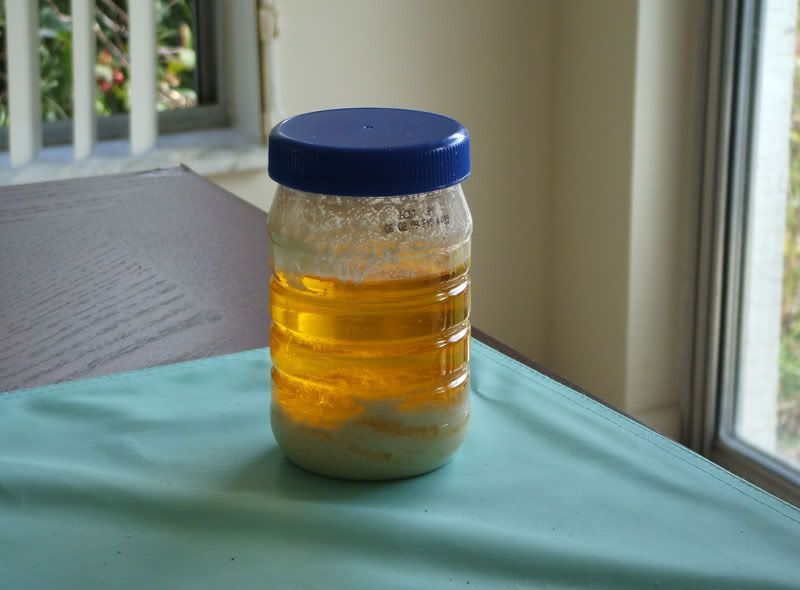Vegetables- Ruined; turned to gelatinous pulp. I think freezing ruptured the walls of the plant cells.
Cheddar Cheese- Became crumbly, but tasted the same.
Bread- No effect, or at least none discernible to my palate.
Mayonnaise- Fundamentally transformed from a viscous, homogeneous, white substance into a runny, two-part solution with a majority fraction of urine-yellow liquid.

If anyone knows the scientific reason why mayonnaise does this, I'd be curious to hear it.

5 comments:
Mayonnaise is an emulsion, so I would assume that you are disrupting the emulsion when you freeze it, most likely by changing the physical properties of the lipids in the mixture; for instance the saturated fats probably solidify. If you are using reduced-fat mayo, however, all bets are off.
i'm pretty sure it's cool to freeze some vegetable. i freeze bell pepper halves all the time when i don't use the whole thing.
thanks for the info about the mayo, i was tyring to figure out if mine was still good, hahaha.
Thats a stupid question. It just is, who cares??
Tina- Who cares? Who cares? SCIENTISTS care, that's who. :) Also, you obviously cared enough to leave a comment. So maybe you're more of a scientist than you realize.
FOOD TECHNOLOGISTS CARE. Its very simple to say that no one cares its not their field. :)
Post a Comment